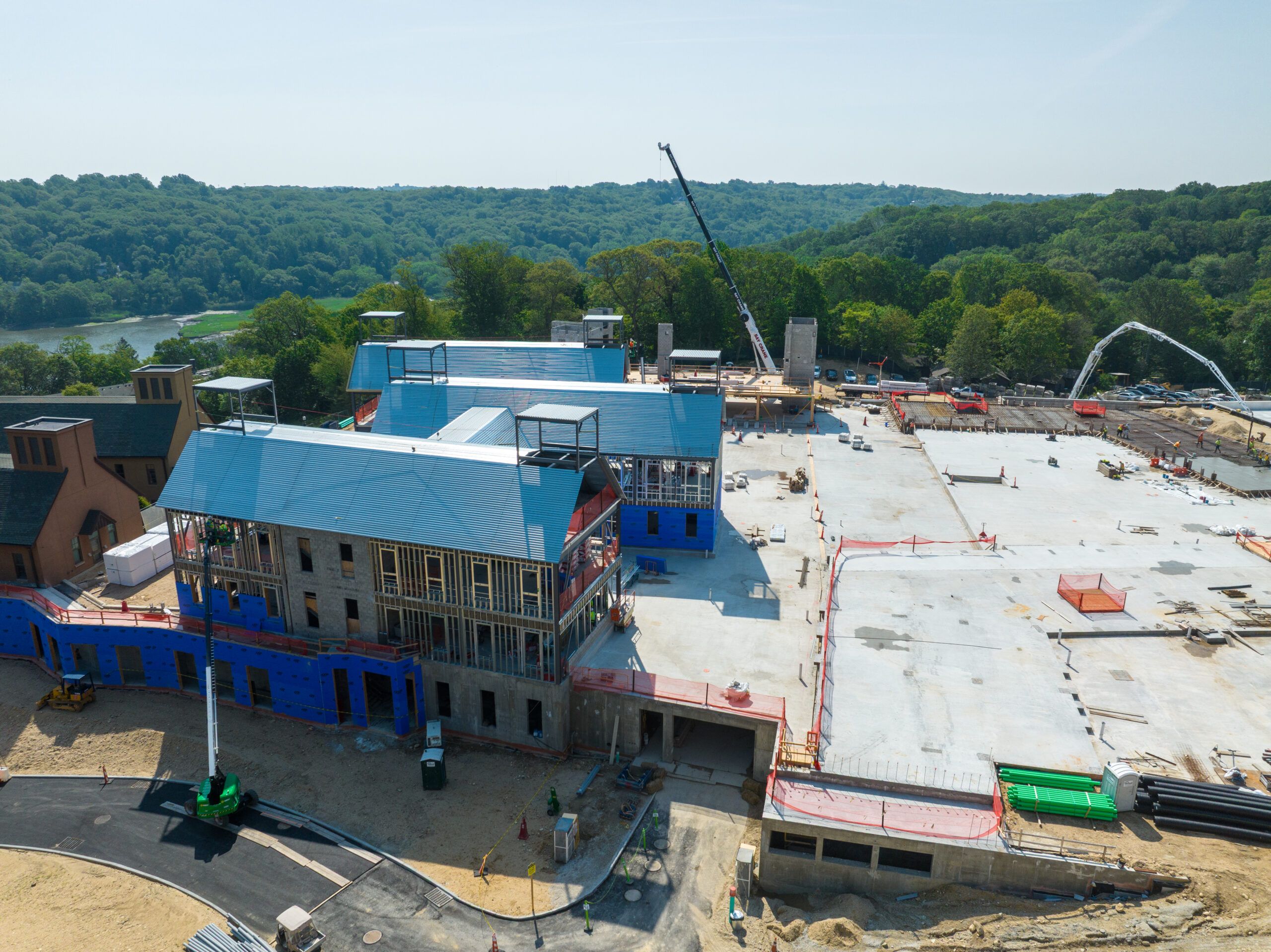Home is where the heart is, and it all starts with the right house plans and layout. Building your dream home isn’t just about looks but about creating a space that fits your life. With thoughtful home decor and a smart layout, you’ll shape a home that’s both beautiful and practical, supporting you every day.
The right home layout can enhance your day-to-day life, give you an increased sense of property value, and ensure that your space truly reflects who you are, with well-designed house plans NZ.
From giving your family priority to ensuring you are choosing the best flow of space, the possibilities will guide you through your home layout options and help make sure your home is both beautiful and functional. After all, the layout is where a home’s story begins. Let us get it right for you!
Prioritize Your Lifestyle Needs First
Before diving into home layout design, take a moment to assess your lifestyle and daily routines. How do you use your current space? You may love to entertain or prefer quiet, separate spaces for work and relaxation. When exploring new construction homes for sale it’s important to consider how each layout helps to explore your unique needs. Here’s how to get started:
- Entertaining Needs: If you frequently host get-togethers, an open floor plan might be ideal, as it promotes easy interaction among the kitchen, dining, and living spaces.
- Privacy: For those who cherish their privacy, having distinct rooms or a multi-story design may be more suitable, featuring bedrooms on the upper level and communal areas on the ground floor.
- Home Office: If you work from home, you’ll want a layout that includes a quiet office space, possibly located away from the busy areas of the house.
Open Floor Plans: Pros and Cons
An open floor plan is a popular choice in modern home design. It eliminates walls between key living areas, such as the kitchen, living room, and dining room, creating a more expansive and ventilating feel.
Open floor plans create a spacious feel, making rooms seem larger and more connected, which is ideal for entertaining as guests can move freely between areas. They allow more natural light to fill the space, creating a brighter, inviting atmosphere.
However, open layouts offer less privacy, which might be challenging for families or those who prefer quiet spaces. Sound travels more easily without walls, which can be an issue in busy households. Additionally, defining distinct areas within an open space requires creativity, such as using furniture or rugs to create separate zones.
When to Choose an Open Floor Plan
- If you love entertaining and want easy flow between kitchen, dining, and living spaces.
- If you want a home that feels bright and spacious.
- If you don’t mind reduced privacy in exchange for openness.
Multi-Story vs. Single-Story Layouts: Which One Suits You?
After deciding on an open floor plan, you would have to consider the design and structure of your home whether this is a multi-story design or a single-story home design.
Multi-Storey Layouts
In multi-story houses, the boundary between a public and a private space is not so blurred. Public areas include a ground floor area made up of a kitchen, living room, sometimes a dining room, and bedrooms and bathrooms upstairs.
Single-storey layouts
Single-story homes, also called ranch-style homes, generally have all or most of their living space on one floor, so there is no requirement for stairs.
Multi-Story vs. Single-Story Comparison
| Feature | Multi-Story Homes | Single-Story Homes |
| Space | Maximizes vertical space, ideal for smaller plots | Spreads horizontally and require more land |
| Privacy | More privacy between living and sleeping areas | Less privacy, as all rooms are on one level |
| Accessibility | Stairs may be challenging for some | Easier to navigate, great for families with small kids or elderly |
| Cost | Typically more expensive to build and maintain | More affordable, simpler construction |
| Views | Can offer better views with upper floors | Limited to the ground-level views |
The Flow of Space: How Rooms Connect
Once you’ve narrowed your layout structure, it’s time to focus on how the spaces will flow. Room flow is crucial for a home that is both functional and comfortable.
Key Considerations:
- Traffic patterns: Ensure that people can move easily between rooms without bottlenecks. For example, a kitchen should ideally be close to the dining and living areas.
- Open vs. closed spaces: If privacy is important, consider creating more isolated rooms like bedrooms and bathrooms. If you enjoy being connected to the rest of the family, create larger, more open common spaces.
- Room adjacencies: The kitchen should be near the dining area for easy meal prep and serving. Similarly, bathrooms should be near bedrooms for convenience.
Tips for Enhancing Room Flow:
- Use open doorways to connect rooms visually.
- Create zones for different activities using furniture or floor plans.
- Use lighting to guide the eye and define different areas of the home.
Maximize Storage and Functionality
While planning the layout of your home, take care to include storage solutions. When there are proper storage solutions in place, they contribute to a well-designed and organized home that works well.
Storage Ideas:
Built-ins: These can be self-constructed shelves and cabinets and alcoves used for storing items thereby utilizing dead space.
Under-stair storage: If you live in a multi-story house, then definitely utilize the space under the stairs for further storage.
Mudrooms and pantries: A designated coat and shoe storage area, along with a proper pantry, really keeps those things organized.
Just remember that your storage needs will increase parallel with your family’s growth, and, therefore, planning for flexibility and future expansion is a must.
Natural Light and Ventilation
Natural lighting and ventilation can make your house feel more comfortable and healthy. Here’s how you could do just that for your home layout:
- Maximizing Natural Light: Window location Position windows to admit sunlight to the maximum extent achievable; specific locations include living rooms and home offices.
- Skylight: Installation of skylight doors in the hall and bathroom will let some natural daylight into the premises.
- Glass doors: Patio or French doors could provide much brighter natural light and the “access” connection with the outdoors.
- Ensuring Proper Ventilation: For cross-ventilation, ensure that fresh air comes in through windows or vents on opposite sides of the house.
- Air circulation: A ceiling fan or a whole-house ventilation system helps air regulate indoor qualities.
Adaptable Rooms and Future Expansion
As your family grows, your needs will change. Adaptable rooms are key to future-proofing your home.
- Multipurpose rooms: Consider spaces that can easily transition from a home office to a guest room or playroom.
- Expandable rooms: Design rooms with the option to expand or convert space as your family’s needs change.
- Finishing basements or attics: Leave room for future expansion by planning for spaces like attics or basements to be finished later.
Location and Plot Considerations
The location and topography of your plot can have a huge impact on your home’s layout. If your plot is on a slope, consider how to design the foundation and entry points. Similarly, a corner lot may require different privacy considerations compared to a more secluded plot.
Key Considerations:
- Orientation: Positioning your home to take advantage of sunlight, views, and natural landscape features is essential.
- Landscape: Design your home’s layout to integrate with its surroundings—perhaps incorporating a deck, patio, or garden.
Conclusion
Choosing the perfect layout for your new home requires careful consideration of many factors: from your lifestyle needs and privacy preferences to your budget and future expansion plans. By understanding what works best for your family today—and how your home can adapt tomorrow—you’ll create a space that’s not only functional but also enjoyable to live in for years to come.
FAQ’s
1. What are important questions to ask a home builder before starting construction?
When selecting a builder, ask about their experience with similarly constructed homes. A reference from previous clients, how they control budget changes, what the quality control process is, and whether they offer a warranty on their work.
2. How long is a typical home construction timeline?
A home construction timeline usually ranges from 6 months to over a year, depending on project complexity, materials, and weather conditions. Regular communication with your builder helps keep you informed about any potential delays or adjustments.
3. What are the common stages in the home construction process?
Home construction begins in the preconstruction phase obtaining the planning and needed permits. The foundation and framing establish that base and frame take place. Then plumbing and electrical systems are added to erect the skeleton of the house. The phase that follows interior and exterior finishing brings about walls, floors, and the face of the home. Finally, there is one last inspection to ensure everything meets the code, so it’s all smooth and ensures a seamless move-in.











